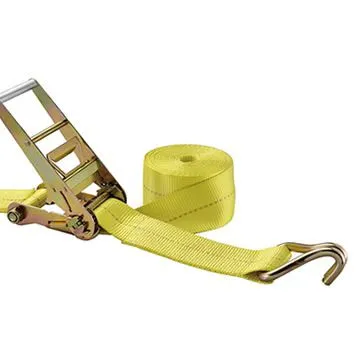- Afrikaans
- Albanian
- Amharic
- Arabic
- Armenian
- Azerbaijani
- Basque
- Belarusian
- Bengali
- Bosnian
- Bulgarian
- Catalan
- Cebuano
- Corsican
- Croatian
- Czech
- Danish
- Dutch
- English
- Esperanto
- Estonian
- French
- German
- Greek
- Hindi
- Indonesian
- irish
- Italian
- Japanese
- Korean
- Lao
- Malay
- Myanmar
- Norwegian
- Norwegian
- Polish
- Portuguese
- Romanian
- Russian
- Serbian
- Spanish
- Swedish
- Thai
- Turkish
- Ukrainian
- Uzbek
- Vietnamese
Kas . 11, 2024 23:16 Back to list
mineral fiber ceiling board specification
Understanding Mineral Fiber Ceiling Board Specifications
In the realm of interior design and construction, the choice of materials plays a pivotal role in achieving both aesthetic appeal and functional integrity. One such material that has gained prominence in recent years is mineral fiber ceiling board. Known for its versatility, durability, and acoustic properties, mineral fiber ceiling boards are increasingly being utilized in commercial and residential spaces. This article will delve into the specifications of mineral fiber ceiling boards, helping you understand their benefits and applications.
What is Mineral Fiber Ceiling Board?
Mineral fiber ceiling boards are ceiling tiles made primarily from mineral fibers, which can include materials like fiberglass, gypsum, and other organic or inorganic fibers. These boards are designed to offer a range of benefits, including sound absorption, thermal insulation, and fire resistance, making them ideal for various environments such as offices, schools, hospitals, and retail spaces.
Specifications of Mineral Fiber Ceiling Board
1. Material Composition Mineral fiber ceiling boards are produced using a combination of mineral-based materials. The exact composition can vary depending on the manufacturer but generally includes a mix of cellulose fibers, gypsum, and mineral wool. These materials confer strength and sound-absorbing qualities while keeping the weight manageable for easy installation.
2. Size and Thickness Typical dimensions for mineral fiber ceiling boards are 2x2 feet (610x610 mm) or 2x4 feet (610x1219 mm), although custom sizes can be produced. The thickness often ranges from 0.5 inches (12 mm) to 1 inch (25 mm), depending on the desired insulation properties and the specific requirements of the project. The choice of size and thickness can significantly influence both acoustic performance and installation processes.
mineral fiber ceiling board specification

3. Acoustic Performance One of the defining features of mineral fiber ceiling boards is their ability to absorb sound. This is quantified by the Noise Reduction Coefficient (NRC), which typically ranges from 0.6 to 0.9 for high-quality boards. A higher NRC rating indicates better sound absorption, making mineral fiber boards an excellent choice for spaces where noise control is essential, such as classrooms and open office environments.
4. Fire Resistance Fire safety is a crucial consideration in building materials. Mineral fiber ceiling boards are generally classified as Class A in fire-resistance ratings due to their non-combustible properties. This characteristic makes them suitable for use in areas where fire safety standards are stringent, providing an added layer of security for building occupants.
5. Moisture Resistance Many manufacturers produce moisture-resistant mineral fiber ceiling boards, which are especially important in areas prone to humidity, such as kitchens, bathrooms, and basements. These boards often include a surface coating or treatment that inhibits mold and mildew growth, ensuring the longevity and integrity of the ceiling system.
6. Finish and Aesthetics Mineral fiber ceiling boards are available in a variety of finishes, including smooth, textured, and painted options. The choice of finish can greatly impact the overall visual appeal of a space. Manufacturers may also offer boards in different colors, allowing designers to create customized looks to match their design vision.
7. Sustainability With a growing emphasis on sustainability, many mineral fiber ceiling boards are manufactured using recycled materials. Additionally, they can contribute to a building's LEED certification by enhancing energy efficiency and indoor air quality. Opting for eco-friendly materials is not only beneficial for the environment but also increasingly aligns with consumer preferences.
Conclusion
In summary, mineral fiber ceiling boards are an excellent choice for those seeking a combination of functionality and aesthetic appeal in their interior spaces. With a diverse range of specifications available—from acoustic performance and fire resistance to moisture control and sustainability—these boards cater to the varying needs of modern building design. Whether you're designing a new office space, renovating a school, or updating a retail environment, understanding the specifications of mineral fiber ceiling boards will empower you to make informed decisions that enhance both the comfort and safety of the space. Their versatility makes them a valuable asset in the toolbox of architects, interior designers, and builders alike.
-
Transform Interiors with PVC Gypsum Ceiling: A Stylish, Durable, and Moisture-Resistant SolutionNewsMay.19,2025
-
The Smart Interior Upgrade: Discover the Durability and Versatility of Gypsum Ceiling Access Panel SolutionsNewsMay.19,2025
-
The Smart Choice for Interior Design: Discover the Value of PVC Gypsum Ceiling SolutionsNewsMay.19,2025
-
Mineral Fiber Ceiling Tiles: The Smart Blend of Performance and AestheticsNewsMay.19,2025
-
Mineral Fiber Ceiling Tiles: The Superior Choice Over Gypsum for Sound and Fire SafetyNewsMay.19,2025
-
Mineral Fiber Ceiling Tiles: Eco-Friendly Strength and Style for Every CeilingNewsMay.19,2025







